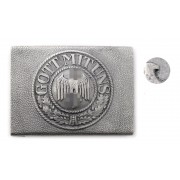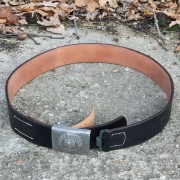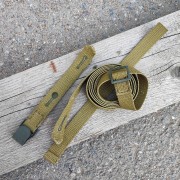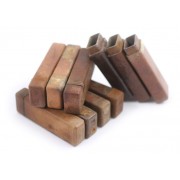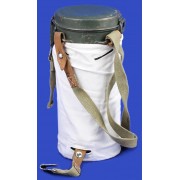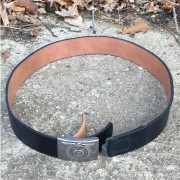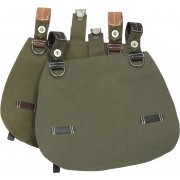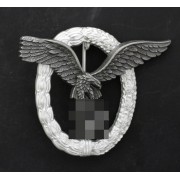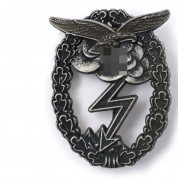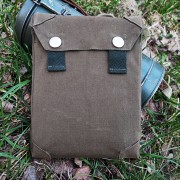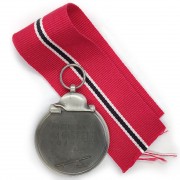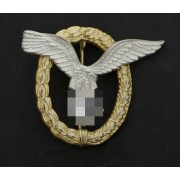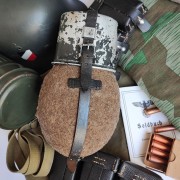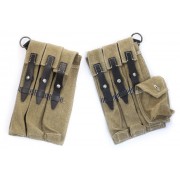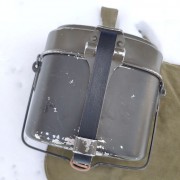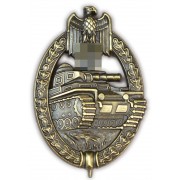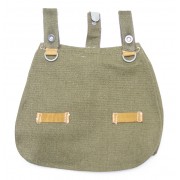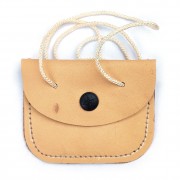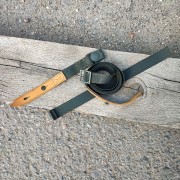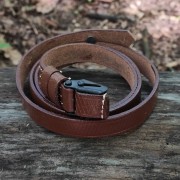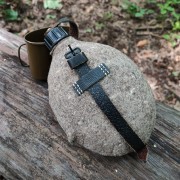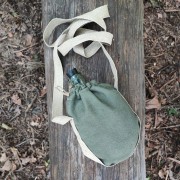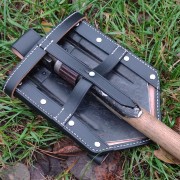Description
Price for the empty bag (without a cape). The cape (filling of the bag) and and other items are present in the photo to understand the color and size of the product and is not for sale.
Copy of the yperit bag. Dense material of light olive color (this is not a sand color!). Details from cotton braid. No manufacturers' marks.
The bag is the right size and cut, perfect for a yperit bag. You can see it in the photo of the bag along with the cape inside.
Historical reference.
An anti-chemical cape (Gasplane) was used to protect the skin of a soldier from sprayed toxic substances such as mustard gas. The size of the cape is 2x1.2 m. It was made from a variety of materials based on processed fabric or paper. The material was processed mainly with synthetic rubber. At the end of the war, economical options appeared from waxed corrugated and other papers.
The colors of the capes varied from bluish green (the beginning of the war), gray, black and bronze (for the tropics), to brown, black, dark blue, dark and light brown, as well as light green and black papers (at the end of the war).
Bags for anti-chemical capes were originally made of rubberized fabric of dark blue-green (blaulich-dunkelgrün) color, or bronze color (for the tropics). In 1942-1943, bags of "field gray" or olive green fabric appeared.
The bag was closed with two buttons, on the back wall there were two fabric loops for attaching the bag to belts. Initially, it was supposed to be worn on the chest, on the shoulder strap of a gas mask case. But due to the inconvenience of this option, it was often turned over and worn under the belt of a gas mask case or attached directly to the gas mask case with rubber bands or straps, which ultimately spoiled the cape.
Since December 1942, it was allowed to carry a bag attached to a gas mask case, the free end of the shoulder strap was threaded through the loops on the bag and fastened along the gas mask case.










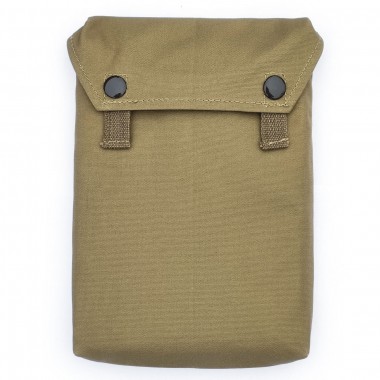
















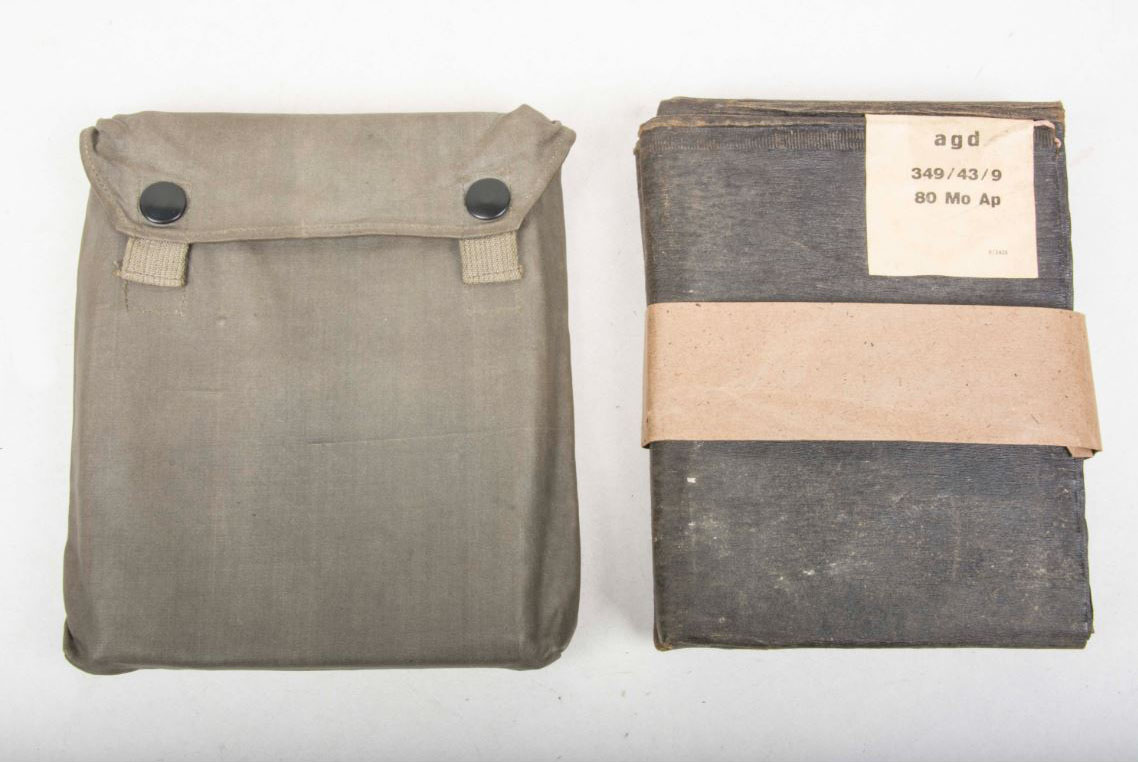
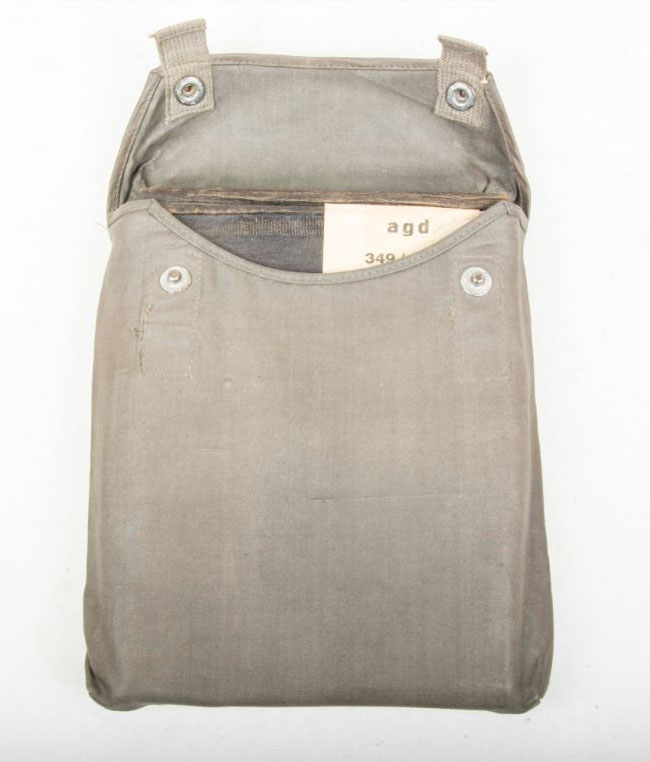
![[on order] Y-strap for infantry [on order] Y-strap for infantry](https://reenact.store/image/cache/f0ffb656aed6e30332216108689a8b1c.jpg)
